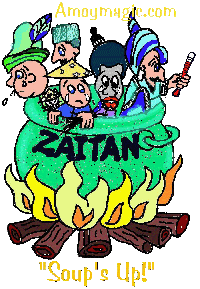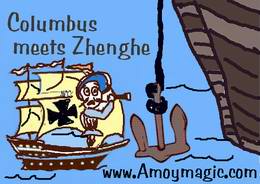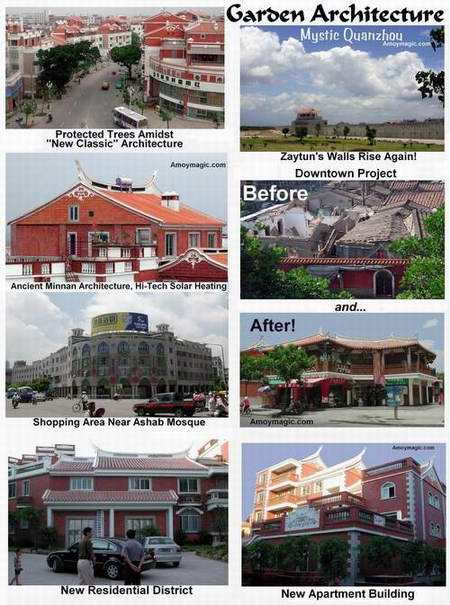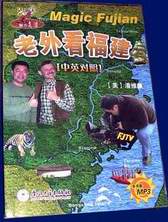![]() Click
to
Access
Click
to
Access
OUTSIDE China
![]() Click
to Access
Click
to Access
INSIDE
China ![]()
TRAVEL LINKS
![]() Xiamen
Xiamen
![]() Gulangyu
Gulangyu
![]() Jimei
Jimei
![]() Tong'an
Tong'an
![]() Jinmen
Jinmen
![]() Zhangzhou
Zhangzhou
![]() Quanzhou
Quanzhou
![]() Wuyi
Wuyi
![]() #1Fujian
Sites!
#1Fujian
Sites!
![]() Fujian
Foto Album
Fujian
Foto Album
![]() Books
on Fujian
Books
on Fujian
![]() Readers'Letters
Readers'Letters
![]() Ningde
Ningde
![]() Zhouning
Zhouning
![]() Longyan
Longyan
![]() Sanming
Sanming
![]() Putian
Putian
![]() Bridges
Bridges
![]() Travel
Info,
Travel
Info,
![]() Hakka
Roundhouses
Hakka
Roundhouses
![]() Travel
Agents
Travel
Agents
MISC. LINKS
![]() Amoy
People!
Amoy
People! ![]()
![]() Darwin
Driving
Darwin
Driving ![]()
![]() Amoy
Tigers
Amoy
Tigers
![]() Chinese
Inventions
Chinese
Inventions
![]() Tibet
in 80 Days!
Tibet
in 80 Days!![]()
![]() Dethroned!
Dethroned!
![]()
![]() Misc.Writings
Misc.Writings
![]() Latest
News
Latest
News
![]() Lord
of Opium
Lord
of Opium
![]() Back
to Main Page
Back
to Main Page
![]() Order
Books
Order
Books![]() Xiamenguide
Forum
Xiamenguide
Forum 

Click
Here for "City of Springs" (Written by Annie Duncan in 1902)
Click Here for Quanzhou Puppets (Marionette)
Page
Visit #7 School -- one of China's Best!
News Update!
Quanzhou got the gold!  I
was very honored to represent Quanzhou in 2003"Nations in Bloom"
international competition in Holland--and Quanzhou got the Gold (beating
Seattle and other tough competitors), as well as the Heritage Management
Award. I'm so proud of my "3rd Home" (2nd being Xiamen, and
I"m not sure where 1st is!
I
was very honored to represent Quanzhou in 2003"Nations in Bloom"
international competition in Holland--and Quanzhou got the Gold (beating
Seattle and other tough competitors), as well as the Heritage Management
Award. I'm so proud of my "3rd Home" (2nd being Xiamen, and
I"m not sure where 1st is!
For more info on NIB (now "Livcom"--Livable Communities Award),
and Xiamen's Gold in 2002 (beating Chicago!), Click
Here!
.......and now, on to the fabled port of Zaytun!
Columbus may have ended up in a “New” World but what he really sought was an Ancient one. The admiral had devoured Marco Polo’s accounts of the unimaginable wealth in China’s Quanzhou, from which the Venetian vagabond sailed for home.
Zayton
(the Arab’s name— a
homonym for “olive,” symbol of peace), was the largest port
on earth, rivaling Alexandria in Egypt. Start of the Silk Road of the
Sea, this was the legendary port of call for Ibn Battuta, Sinbad the Sailor,
and Admiral Zheng He, who 70 years before Columbus sailed the seas in
440 foot treasure ships that would have dwarfed Columbus’ little
85’ Santa Maria.
a
homonym for “olive,” symbol of peace), was the largest port
on earth, rivaling Alexandria in Egypt. Start of the Silk Road of the
Sea, this was the legendary port of call for Ibn Battuta, Sinbad the Sailor,
and Admiral Zheng He, who 70 years before Columbus sailed the seas in
440 foot treasure ships that would have dwarfed Columbus’ little
85’ Santa Maria.
Columbus never made it to Zaytun, but I have! That mystic
“City of Light” is just a 90 minute drive up the coast from
my adopted home of Xiamen (which a few centuries ago was part of Quanzhou).
“At this city you must know is the Haven
of Zayton, frequented by all the ships of India, which bring thither spicery
and all other kinds of costly wares. It is the port also that is frequented
by all the merchants of Manzi, for hither is imported the most astonishing
quantity of goods and of precious stones and pearls, and from this they
are distributed all over Manzi. And I assure you that for one shipload
of pepper that goes to Alexandria or elsewhere, destined for Chris-tendom,
there come a hundred such, aye and more too, to this haven of Zayton;
for it is one of the greatest havens in the world for commerce.”
Marco Polo (Venetian vagabond)
Back to Top
Zaytun’s True Wealth Marco Polo was impressed by Zaytun’s gems, pearls, porcelain, and silk, but he overlooked the true wealth of this mythic port—the place and the people!
Zayton was a city of gardens, lakes and forests, ringed by mountains, facing the sea, and nestled between two great rivers. Zaytun, with its three great concentric city walls, had a storybook setting that has inspired nearly 2,000 years of Chinese poets and philosophers. ......
Jerusalem
of Asia UNESCO dubbed Quanzhou a “World Museum of
Religion” because the city hosted every major religion, from Nestorian
Christianity and Tibetan Buddhism to Islam. Quanzhou’s Muslim community
supposedly dates back to the day of Mohammed himself, and the Persian
Manichean religion survives today only in Quanzhou....
World Citizens
Broad exposure to world philosophies, religions and academics helped give
Quanzhou people the uniquely global outlook that insured their prosperity
both at home and abroad. Today, over 5 million Overseas Chinese, and 40%
of Taiwan’s Han Chinese, trace their roots to Quanzhou. But Fujianese
were a force to be reckoned with long before the City of Light was kindled.
The Fujian Flame As we’ll see in the next chapter when we visit China’s best Maritime Museum, China’s great maritime tradition was born right here in Fujian over 2,000 years ago when King Fuchai built a shipyard near Fuzhou. From King Fuchai we get the name of our province, and the name for the great Fujian boats (fuchuan), with their “dragon eyes” painted on the prows so they could see where they were going—which too often was straight into the mouth of a watery hell.
Guang Sima claimed that during the 10th century, fully 40 to 50% of ships traveling from Fujian to North China were lost at sea! So it was with some awe that Koreans recorded the arrival of Quanzhou merchants as early as 1017 A.D.. They also visited Manchuria and Japan. Su Shi wrote, “Only the crafty merchants of Fujian dare to travel to Koryo where the kingdom urges them to seek profits. Men such as Xu Jian of Quanzhou are legion.” But if men such as Xu Jian were legion, it was partly because they had such little flat land back home to hang onto...
Back to Top
“8 Parts Mountain, 1 Part Water,
1 Part Field"
..........."Yi Shan,
Yi Shui, Yi Fen Tian"
Fujian is blessed with everything but flat land. So much of Fujian is
vertical that we could easily have the biggest province in China if someone
flattened it. A millennium ago, Fujianese sought more farm land with massive
land reclamation projects, but even after draining the malarial marshes
and pushing back the sea, farm land was still inadequate, so the intrepid
Fujianese took to commerce—and here they found their calling.
Fujianese Integrity Over the centuries, Fujianese developed a reputation not only for business prowess but also for unimpeachable integrity. In 1912, Reverend Pitcher wrote in “In and About Amoy”:
“...what shall we say of them [Fujianese]? They
are a part of a wonderful people...
"One hears all kinds of comment upon the deceptiveness of the Chinese
and yet in business circles, the commercial world, they have the reputation
of being the most straightforward and conscientious merchants in the whole
Eastern hemisphere. This holds true here in Amoy...You may always depend
upon the man with whom you may be dealing to deliver the goods. No matter
how much they may lose in the transaction the Chinese have the reputation
of fulfilling their contracts every time to the letter.”
It was the people, as much as the place, which made Zaytun the natural start of the Silk Road of the Sea. And, of course, there was also Zaytun’s silk…
“The first city which we reached after our sea
voyage was the city of Zaytun... Zaytun is an immense city. In it are
woven the damask silk and satin fabrics which go by its name, and which
are superior to the fabrics of Khansa and Khan-Baliq. The port of Zaytun
is one of the largest in the world, or perhaps the very largest. I saw
in it about a hundred large junks; as for small junks, they could not
be counted for multitude.” ...............Ibn
Battuta, Arab Traveler (1304-1358)
Back to Top
"Silk
Road of the Sea" Silk Road evokes
images of deserts and camels, but the Maritime Silk Road accounted for
much of the trade because one ship carried as much as 700 camels (and
ships didn't spit at you). While Fujianese sailed the seven seas, the
rest of the world sailed to Zaytun for tropical fruits, agricultural products,
Chinese medi-cines--and Fujian’s famous porcelain and silks (our
English word ‘satin’ comes from “Zaytun”). 
Over 3,000 years ago, silk was worth its weight in gold in the West. The Roman poet Horace (65-8 B.C.) wrote about silk, and Lucan (39-65 A.D.) wrote of “Cleopatra’s white breasts...revealed by the fabric... close-woven by the shuttle of the Seres [Chinese].”
The Secret of Silk
For centuries, Westerners beguiled by visions of Cleopatra’s silky
undies sought to discover silk’s origin. Pliny (A.D.23-79), in “Natural
History,” wrote that silk grew on trees!
“The first race encountered are the Seres, so famous for the
fleecy product of their forests. This pale floss, which they find growing
on the leaves, they wet with water, and then comb out, furnishing thus
a double task to our womenkind in first dressing the threads, and then
again of weaving them into silk fabrics. So has toil to be multiplied;
so have the ends of the earth to be traversed: and all that a Roman dame
may exhibit her charms in transparent gauze.”
Back to Top
Zaytun Porcelain Even more desirable than Zayton’s silk was her porcelain. One of China’s top porcelain centers, Quanzhou’s delicate wares so bewitched Western rulers that some monarchs bankrupted national treasuries to amass their vast collections. Dehua was the producer of the famed Blanc 'de Chine porcelain now prized by museums all over earth (and China too).
Fujian—Established Happiness
With silk, porcelain, and her other treasures, this province
well deserved the name of "Fujian" (Fukien in old Romanization):
“The name Fukien, which means ‘established
happiness,’ in a large measure characterizes the people of this
district. I think we may safely go further and say that this is true of
the whole prov-ince. What we mean is this: they are not antagonistic to
for-eigners... With the exception of a few occasions, the Chinese in these
parts have never exhibited any opposition to the stranger within their
gates.”
.........................Pitcher, "In
and About Amoy", 1912, p.96
Unfortunately, Fujian's happiness was soon to be disestablished…
Back to Top

Admiral Zheng He In Admiral Zheng He's day, China and India together accounted for over half of the world’s gross national product (and Angus Madison, a British eco-nomic historian, claims China accounted for 29% of the globe’s GNP as late as 1820!). But within a century of Zheng He’s day the legendary City of Light was extinguished.
Before his seventh voyage in 1432, Zheng He erected a tablet in Changle (near Fuzhou), in which he claimed to have “unified seas and continents” and “the countries beyond the horizons from the ends of the earth have all become subjects.” But his great expeditions had taken a heavy toll on the land—especially on the common folk, who received nothing in return for their sacrifices to build the fleets.
While Westerners made a killing at commerce (Magellan’s
crew once sold 26 tons of cloves for 10,000 times the cost!), the Emperor’s
fleet was built primarily to impress the world with the glories of China
(and, of course, her Emperor). And the ships returned with not with practical
commodities but cargoes of exotic gifts and luxuries for the imperial
court (primarily the corrupt eunuchs).
Back to Top
Dousing the City of Light Not long after Zheng He’s death, China closed her doors and destroyed the greatest navy the world had ever seen. The Ming navy had 3,500 ships in the early 1400s, but within decades it was a capital offense to build boats with more than two masts. In 1525, the emperor ordered the destruction of all seafaring ships, and the arrest of the merchants who sailed them. By 1551, it was a crime to sail the seas in a ship with more than one mast.....
#3! Rising Again! ....But Quanzhou people still have their age-old knack for business! Over the past decade, this resurrected city’s annual GDP grew an average of 26%--#3 amongst China’s top 212 cities!
Return
to the Garden City 
From 1998 to 2002, Quanzhou youth spent 1.3 million man hours (including
girl hours, I suppose) planting over 6 million trees.
From family gardens to neighborhood gardens, city parks,
forests, and lakes, Quanzhou people are again molding their city to their
unique environment, rather than wrecking that environment to accommodate
urban sprawl.
Back to Top
Endless Cultural Traditions Quanzhou is also resurrecting and breathing new life into its endless number of cultural sites and traditions. This ancient city of traders, educators, philosophers, and adherents of virtually all major religions, also gave birth to Chinese marionettes, S. Shaolin Kung fu, and Southern Chinese music and opera. Quanzhou produced the prized blanc’ de Chine porcelain now displayed proudly in museums around the world. Hui’an’s 1700 year tradition of stonework attracts admirers and buyers from all over the planet.
Dozens of architectural relics include one of Islam’s top ten mosques, the last temple to the Persian Mani, and engineering marvels like the ancient Luoyang and Anping stone bridges (longest in the world). Quanzhou is also famous for its unique cuisines, and, of course, the Anxi tea that sparked the Boston Tea Party.
Above ground, not below Some experts claim that modern Quanzhou has more archaeological artifacts than any Chinese city but Beijing or Xi’an, but as Quanzhou people quickly point out, “Xi’an’s heritage is below ground--ours is above!” And so are her hopes for the future…
Back to Top
Touring Zaytun – a Sample
Itinerary
An official Quanzhou brochure boasts “2,000 tourist sites famous at home and abroad,” so where on earth (or China) do you start? With a few dozen trips to Quanzhou under my belt (eat your heart out, Columbus!), I suggest the following simple itinerary. For updates, or to share your own discoveries, check out my wife Susan Marie’s website, http://www.Amoymagic.com.
1. Maritime Museum The first stop in Zaytun should be the UNESCO-sponsored Maritime Museum—China’s biggest and best! After enjoying these eye-opening bilingual exhibits you’ll have a better handle on not only ancient China’s marvelous maritime achievements but also ancient Quanzhou’s pivotal role in both domestic and interna-tional affairs. And after the museum, head downtown.
2. Zhongshan Rd. Historic District, was so abuzz with activity 1,000 years ago that one visitor said it was “intoxicating.” Treasure Street had more gems, jewels, and gold than any place on the planet (today, the best buy is a granny’s great sausages-on-a-stick).
The Zhongshan Road restoration and preservation project
was awarded the “Excellent Relic Protection in Asian-Pacific Area”
in UNESCO’s Relic Protection Campaign. After a stroll along this
delightfully shaded street, enjoy a dozen major sites all within walking
distance (or catch a pedicab if you can wake the operator). With a good
3 dozen tours of Quanzhou under my belt (and excellent Quanzhou cuisine
hanging over it!), I suggest this simple itinerary:
....continued in "Mystic
Quanzhou--City of Light"
...............Click
here to order books online
Back to Top
Supplement
"On
The City and Great Haven of Zayton"
........................By
Marco Polo
(Yule-Cordier Edition, Volume II, 1903 edition, and 1920 addenda)
“Now when you quit Fuju and cross the River, you travel for five days south-east through a fine country, meeting with a constant succession of flourishing cities, towns, and villages, rich in every product. You travel by mountains and valleys and plains, and in some places by great forests in which are many of the trees which give Camphor. There is plenty of game on the road, both of bird and beast. The people are all traders and craftsmen of Fuju. When you have accomplished those five days journey you arrive at the very great and noble city of ZAYTON, which is also subject to Fuju.
“At this city you must know is the Haven of Zayton, frequented by all the ships of India, which bring thither spicery and all other kinds of costly wares. It is the port also that is frequented by all the merchants of Manzi, for hither is imported the most astonishing quantity of goods and of precious stones and pearls, and from this they are distributed all over Manzi. And I assure you that for one shipload of pepper that goes to Alexandria or elsewhere, destined for Christendom, there come a hundred such, aye and more too, to this haven of Zayton; for it is one of the greatest havens in the world for commerce.
“The Great Kaan derives a very large revenue from the duties paid in this city and haven; for you must know that on all the merchandise imported, including precious stones and pearls, he levies a duty of ten per cent, or in other words takes tithe of everything. Then again the ship's charge for freight on small wares is 30 per cent, on pepper 44 per cent, and on lignaloes, sandalwood, and other bulky goods 40 per cent, so that between freight and the Kaan’s duties the merchant has to pay a good half the value of his investment [though on the other half he makes such a profit that he is always glad to come back with a new supply of merchandize]. But you may well believe from what I have said that the Kaan hath a vast revenue from this city.
“There is a great abundance here of all provision for every necessity of man's life. [It is a charming country, and the people are very quiet, and fond of an easy life. Many come hither from Upper India to have their bodies painted with the needle in the way we have elsewhere de-scribed, there being many adepts at this craft in the city.]
“Let me tell you, and also that in this province there is a town called TYUNJU where they make vessels of porcelain of all sizes, the finest that can be imagined. They make it nowhere but in that city, and thence it is exported all over the world. Here is is abundant and very cheap, insomuch that for a Venice groat you can buy three dishes so fine that you could not imagine better.
“I should tell you that in this city (i.e. of Zayton} they have a peculiar language. [For you must know that throughout all Manzi they employ one speech and one kind of writing only, but yet there are local dif-ferences of dialect, as you might say of Genoese, Milanese, Florenties, and Neapolitans, who though they speak different dialects can under-stand one another.]
“And I assure you that the Great Kaan has as large customs and revenues from this kingdom of Chonka [Fujian?] as from Kinsay, aye and more too.
“We have now spoken of but three out of the nine kingdoms of Manzi, to wit Yanju and Kinsay and Fuju. We could tell you about the other six, but it would be too long a business; so we will say no more about them.
“And now you have heard all the truth about Cathay
and Manzi and many other countries, as has been set down in this book....”
Note on “The City of Lights”
This is the title of Selbourne’s alleged translation of the memoirs
of Jacob D’Ancona, a Jewish merchant who supposedly visited China
4 years before Marco Polo. True or not, it’s a fascinating story,
and I like the name “City of Light” for several reasons: Quanzhou,
start of the Maritime Silk Road, was a commercial and cultural crossroads,
a great melting pot, with people of all nations and faiths living together
peacefully—a true light in that era, and one that I hope to see
rekindled.
TRAVEL
LINKS  Favorite
Fujian Sites
Favorite
Fujian Sites  Fujian
Foto Album
Fujian
Foto Album  Xiamen
Xiamen
 Gulangyu
Gulangyu
 Fujian
Guides
Fujian
Guides  Quanzhou
Quanzhou
 Zhangzhou
Zhangzhou
 Longyan
Longyan
 Wuyi
Mtn
Wuyi
Mtn  Ningde
Ningde
 Putian
Putian
 Sanming
Sanming
 Zhouning
Zhouning
 Taimu
Mtn.
Taimu
Mtn.  Roundhouses
Roundhouses
 Bridges
Bridges
 Jiangxi
Jiangxi
 Guilin
Guilin
 Order
Books
Order
Books
 Readers'
Letters
Readers'
Letters
Last Updated: May 2007
![]()
DAILY
LINKS
![]() FAQs
Questions?
FAQs
Questions?
![]() Real
Estate
Real
Estate
![]() Shopping
Shopping
![]() Maps
Maps
![]() Bookstores
Bookstores
![]() Trains
Trains
![]() Busses
Busses
![]() Car
Rental
Car
Rental
![]() Hotels
Hotels
![]() News
(CT)
News
(CT)
![]() Medical
& Dental
Medical
& Dental
![]() YMCA
Volunteer!
YMCA
Volunteer! ![]()
![]() XICF
Fellowship
XICF
Fellowship
![]() Churches
Churches
![]()
![]()
![]() Temples
Temples![]()
![]() Mosque
Mosque
![]() Expat
Groups
Expat
Groups
![]() Maids
Maids
![]() Phone
#s
Phone
#s
EDUCATION
![]() Xiamen
University
Xiamen
University
![]() XIS(Int'l
School)
XIS(Int'l
School)
![]() Study
Mandarin
Study
Mandarin
![]() CSP(China
Studies)
CSP(China
Studies)
![]() Library
Library
![]() Museums
Museums
![]() History
History
DINING
![]() Restaurants
Restaurants
![]() Asian
Asian
![]() Veggie
Veggie
![]() Junk
Food
Junk
Food
![]() Chinese
Chinese
![]() Italian
Italian
![]() International
International![]()
![]() Visas
4 aliens
Visas
4 aliens
RECREATION
![]() Massage!
Massage!
![]() Beaches
Beaches
![]() Fly
Kites
Fly
Kites
![]() Sports
Sports
![]() Boardwalk
Boardwalk
![]() Parks
Parks
![]() Pets
Pets
![]() Birdwatching
Birdwatching
![]() Kung
Fu
Kung
Fu ![]() Hiking
Hiking
![]() Music
Events
Music
Events
![]() Festival&Culture
Festival&Culture
![]() Humor&
Humor&![]() Fun
Fotos
Fun
Fotos![]()
BUSINESS
![]() Doing
Business
Doing
Business
![]() Jobs!(teach/work)
Jobs!(teach/work)
![]() Hire
Workers
Hire
Workers
![]() Foreign
Companies
Foreign
Companies
![]() CIFIT
(Trade Fair)
CIFIT
(Trade Fair)
![]() MTS(Translation)
MTS(Translation)
![]()
Back to Top





